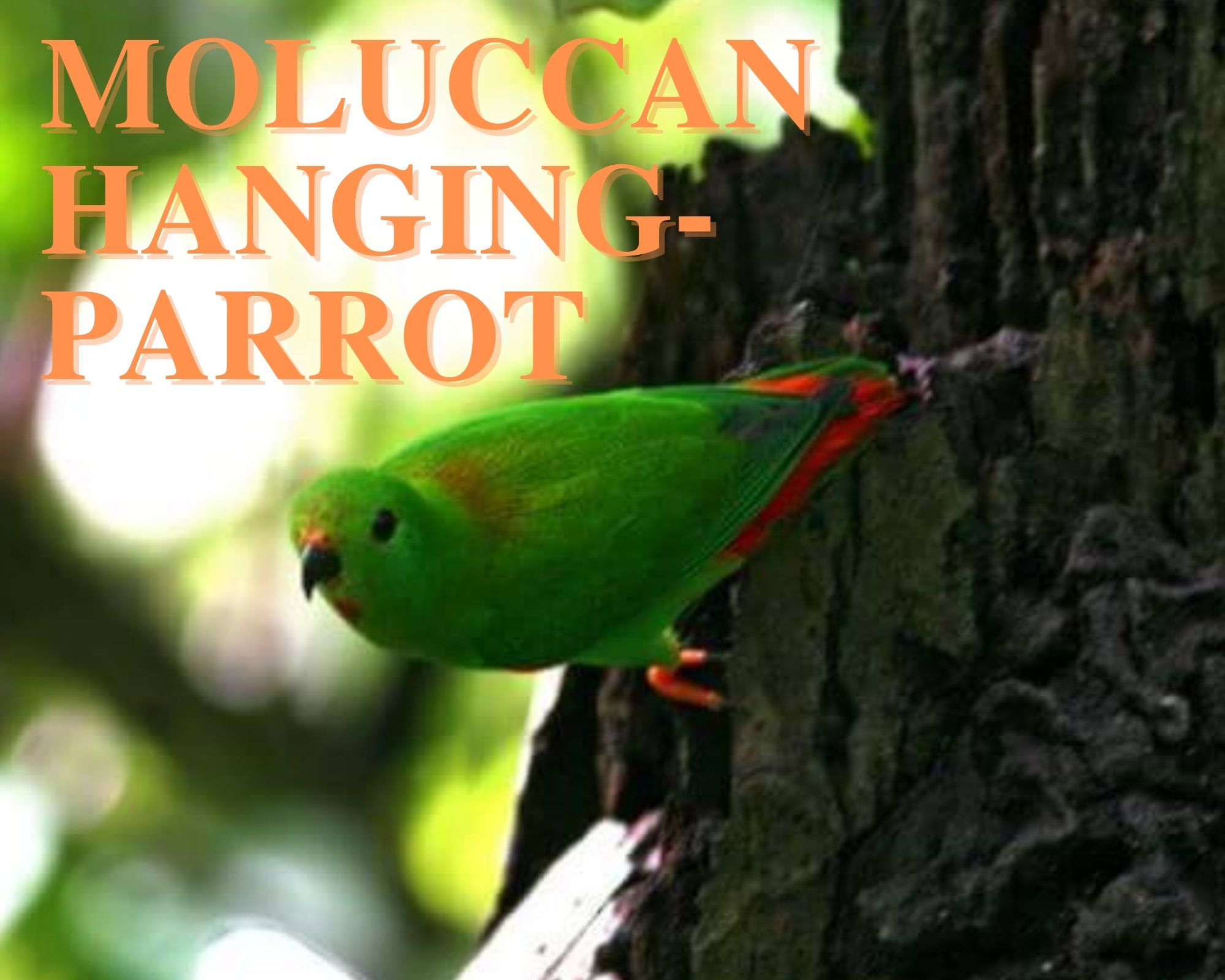
Moluccan Hanging Parrot 11 cm. Emerald green, slightly darker on uppersides and wings; bill black; forehead to mid-crown red; throat patch, edge of the wing, and rump and upper tail-coverts red; legs orange.
Moluccan Hanging Parrot Female has a green crown and less red on the throat, vague orange bloom on the mantle. Immature has a yellowish throat patch and forewing.
Systematics History
Member of the L. stigmatus group (which see). Sometimes treated as conspecific with L. sclateri (but separate treatment appropriate ) and L. catamene. Monotypic.
Subspecies
Monotypic.
Distribution
N Moluccas: Morotai, Halmahera, Kasiruta and Bacan.
Habitat
Primary and secondary forest areas, selectively logged forest, coastal Casuarina trees, tall mangroves and edges of agricultural clearings, occasionally coconut groves.
Generally found in lowlands, but this may simply be because most of the preferred secondary habitat is in the lowlands, not a genuine altitude preference.
Movement
Known to make diurnal movements over long distances.
Diet and Foraging
Birds have been seen foraging in the crowns of tall flowering and fruiting Erythrina and Casuarina trees, Rhizophora mangroves, and coconut palms.
Sounds and Vocal Behavior
Not well documented. Moluccan Hanging Parrot Calls include short high-pitched notes, given singly or in phrases of 3–4 notes, e.g. “tsee-see-see-seet”. Also a short staccato “tsik”, given singly or in loose series.
Conservation Status
Not globally threatened. CITES II. A BirdLife “restricted-range” species. Overall, moderately common; rare in primary forest, commoner in secondary forest.




















